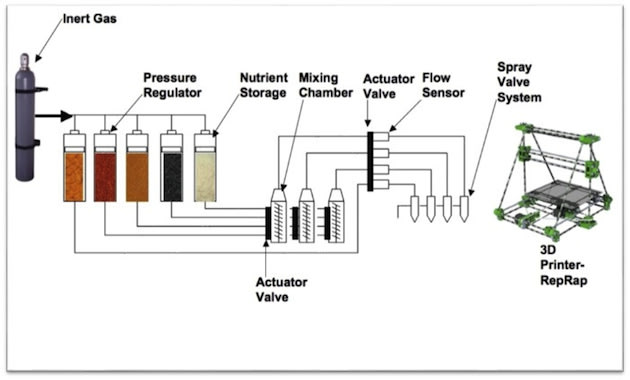URL @
http://news.yahoo.com/blogs/sideshow...194050661.html

Some 3-D printer food made from meal worms (TNO research)
Call it food for thought. Or perhaps
thought for food:
NASA has given a six-month grant to a company developing what could be the world’s first 3-D food printer. And the project’s developer, reports Quartz, an online digital news site, believes the invention could be used to end world hunger.
Quartz explains that the printer is the brainchild of mechanical engineer
Anjan Contractor. Being developed by Contractor’s company, Systems & Materials Research Corp., it will use proteins, carbohydrates and sugars to create edible food products.
Contractor says one of his primary motivations is a belief that food will become exponentially more expensive in the near future. The average consumer, he told Quartz, will need a more economically viable option.
Some alternative food source options that may be used with the printer include algae, duckweed, grass, lupine seeds, beet leaves and even
insects, according to
TNO Research, which is working with Contractor on the project.
“I think, and many economists think, that current food systems can’t supply 12 billion people sufficiently,” said Contractor. “So we eventually have to change our perception of what we see as food.”
One of Contractor’s first prototypes will be a 3-D pizza printer, and he hopes to begin building it over the next couple of weeks. Contractor, reports Quartz, explained that it will print "a layer of dough, which is baked at the same time it’s printed, by a heated plate at the bottom of the printer. Then it lays down a tomato base, 'which is also stored in a powdered form, and then mixed with water and oil.'" Lastly comes the "protein layer."
Contractor also hopes that people will be able to share recipes via an open source coding system.
“One of the major advantages of a 3-D printer is that it provides personalized nutrition,” Contractor told Quartz. “If you’re male, female, someone is sick—they all have different dietary needs. If you can program your needs into a 3-D printer, it can print exactly the nutrients that person requires.”
NASA is certainly a believer: The six-month grant comes to $125,000. The agency specifically interested in using the 3-D printer to feed astronauts on long space voyages.
“Long distance space travel requires 15-plus years of shelf life,” Contractor said to Quartz. “The way we are working on it is, all the carbs, proteins and macro and micro nutrients are in powder form. We take moisture out, and in that form it will last maybe 30 years.”

The 3D food printer schematic (SMRC)
